From strength to strength: new developments across the EuroVelo network in 2021
As 2021 comes to an end, we take look back at the significant improvements that have been made across the EuroVelo network over the past twelve months on the national and regional level.
New developments on the routes
Significant route development projects have taken place on all 17 EuroVelo routes this year. Unfortunately, we do not have the space to cover all of them but to provide a flavour we can start in the Belgian region of Wallonia, which launched its Ravel 38 and 39 cycle routes this year. These make up the section of EuroVelo 3 – Pilgrims Route between Liege and the German city of Aachen and the total investment was around €8,400,000. A few months later, they were awarded “European Greenway of the Year” by the European Greenways Association!
The Italian section of EuroVelo 7 – Sun Route (Ciclovia Del Sole) also witnessed an important inauguration in 2021. A 46 km route was developed along old railway tracks, from the town of Mirandola to Sala Bolognese, on the section linking Bologna to Verona. The ribbon cutting ceremony was shown live on Facebook! The €5.1 million invested in the project benefits both tourists and locals alike.
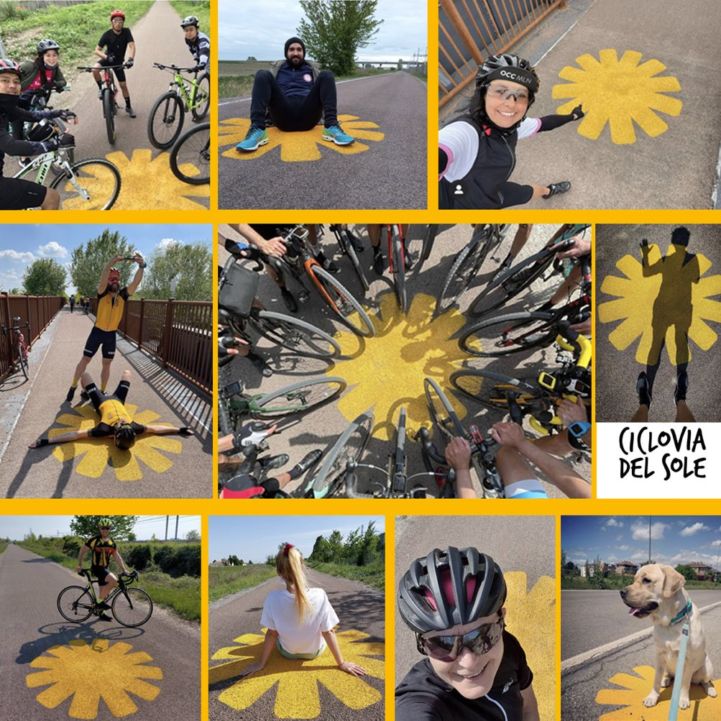
There have also been a number of projects related to EuroVelo 4 – Central Europe Route in France. In the region of Hauts-de-France, work began on a 28 km long section of the route in the summer linking the towns of Mers-Les-Bains and Cayeux-Sur-Mer ( 17.7km), Saint-Firmin-Les-Crotoy and Saint-Quentin-Tourmont, for 4.3km and finally the municipalities of Fort-Mahon-Plage and Pont-à-Cailloux, equaling to 5.8km.
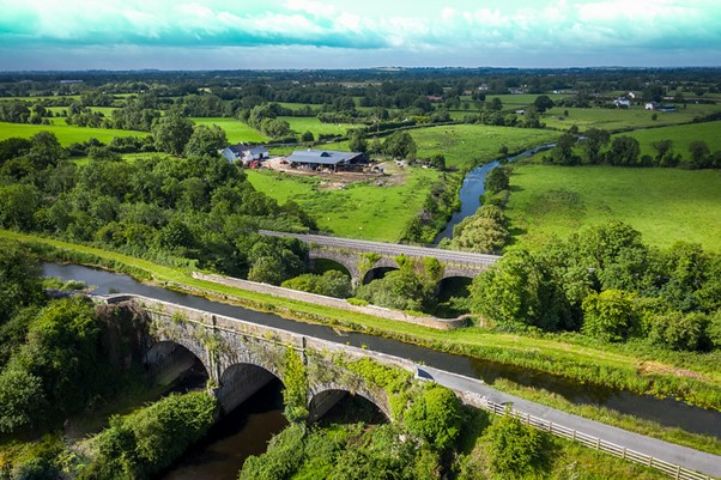
In Ireland, the Royal Canal Greenway was inaugurated back in March, forming part of EuroVelo 2 – Capitals Route. The €12 million investment, in partnership with Waterways Ireland, aimed to develop of sustainable tourism in the area. The Royal Canal Greenway stretches from the town of Maynooth, Enfield, Mullingar and Cloondara in Longford, forming a scenic 130 km cycling route. Still on the Emerald Isle, a 40km long section of the Limerick Greenway on EuroVelo 1 – Atlantic Coast Route was also inaugurated in 2021. A valuable resource for both tourists as well as locals who can now enjoy a safe, modern and attractive cycle route.
Significant pieces of infrastructure have been constructed around Europe as part of these developments. For example, an impressive bicycle bridge was installed on the route of EuroVelo 1 in the town of Bidart, in the French region of Nouvelle Aquitaine. This enables locals and tourist to cross the railroad tracks safely and conveniently.
More EuroVelo signs
This year has seen an explosion of EuroVelo signs being installed across the network. Many Spanish regions have be installing the famous blue, yellow and white panels, including Andalucía and Catalonia, but perhaps most notable was Murcia where the whole of EuroVelo 8 – Mediterranean Route was signed during 2021.
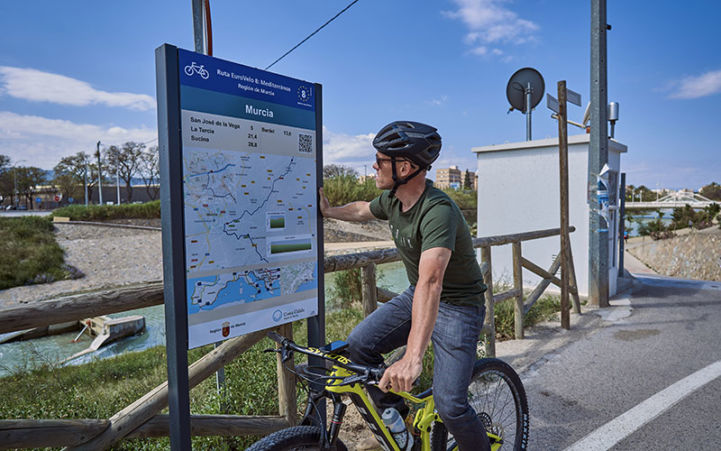
On the Irish section of EuroVelo 1 – Atlantic Coast Route, Cork County Council has done a great job in installing the route information panels on the section linking Timoleague and Kilbrittain following an investment of €500,000. The whole of EuroVelo 1 in Ireland is due to be fully signed in early 2022. On the same route but hundreds of kilometers to the south, the Portuguese Municipality of Aljezur in the Algarve has also signed its section of EuroVelo 1 this year.
Also noteworthy is the German region of Hessen, which successfully managed to install signs on its section of EuroVelo 13 – Iron Curtain Trail and the initiative of the Finnish government to provide financial support for those municipalities wanting to install signs for EuroVelo 10 – Baltic Sea Cycle Route.
Cycle friendly facilities
There were improvements away from the cycle routes as well. Efforts designed to make the lives of cycle tourists easier as they make their way across the continent. Taking into account the growing number of cycle tourists in Czechia, Slovakia, Poland and Hungary, the four countries came together to launch a common “Cyclists Welcome in V4” scheme to support the so-called Visegrád Group in deploying cycling friendly services along their cycling routes.
On EuroVelo 6 – Atlantic-Black Sea, the city of Besançon launched its first e-bike charging and parking station, right in the heart of the old town. Perfect for leaving your trusty steed while you visit this fascinating city.
In the region of Extremadura, along the Spanish section of EuroVelo 1, the town of Hervàs has introduced new services for cyclists in the old railway station. There, tourists can find a cycle-friendly hostel, a café, self-repair points and a bike rental shop for more complicated tasks.
The Slovenian section of EuroVelo 8 – Mediterranean Route introduced a free Bike & Bus services during the summer, linking the EuroVelo route to the dramatic inland area of Karst.
And to get a feel for how many cyclists are using EuroVelo 11 – Eastern Europe Route in Slovakia, the town of Prešov has installed four brand new counters. The chances are that, like the rest of the network, the numbers are going up!
Increasing online resources
The past year also saw developments with regards to online resources available for cyclists travelling on the EuroVelo network. For example, the French section of EuroVelo 3 – Pilgrims Route (known as La Scandibérique in France), launched a brand new website in April, covering the 1,700 km itinerary which crosses 20 départements and 4 regions. The new website is included in the national platform for cycle tourism, France Vélo Tourisme. A major step forward in the development of the largest EuroVelo route in France!
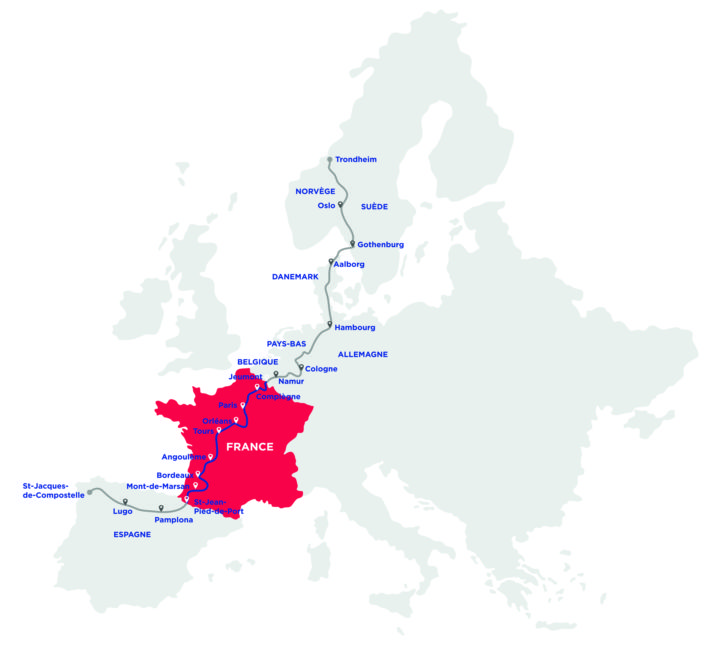
Added to this, EuroVelo’s national partners in Czechia have created and launched a new landing page for tourists to find their way on the country’s EuroVelo routes : EuroVelo 4 – Central Europe Route, EuroVelo 7 – Sun Route, EuroVelo 9 – Baltic Adriatic and EuroVelo 13 – Iron Curtain Trail. It very successfully highlights Czechia’s natural areas, landscapes and vibrant towns and cities!
We should also note that our Belgian EuroVelo Coordination Center, Pro Velo, has updated its own website and it now showcases all five EuroVelo routes passing through the country: EuroVelo 3 – Pilgrims Route, EuroVelo 5, Via Romea (Francigena), EuroVelo 4 – Central Europe Route, EuroVelo 12 – North Sea Cycle Route and EuroVelo 19 – Meuse Cycle Route. Great news for tourists wishing to explore Belgium by bike.
EuroVelo promotional campaigns
During four week in August and September 2021, the CNTB ( The Croatian National Tourist Board ) ran a promotional campaign focusing on the promotion of EuroVelo 8 – Mediterranean Route. The country enjoys over 1,000 km of this route. The campaign has been named “Bicikliraj, istraži i uživaj, which translates as Cycle, Explore and Enjoy! You can view the related promotional video on the Mediterranean Route website.
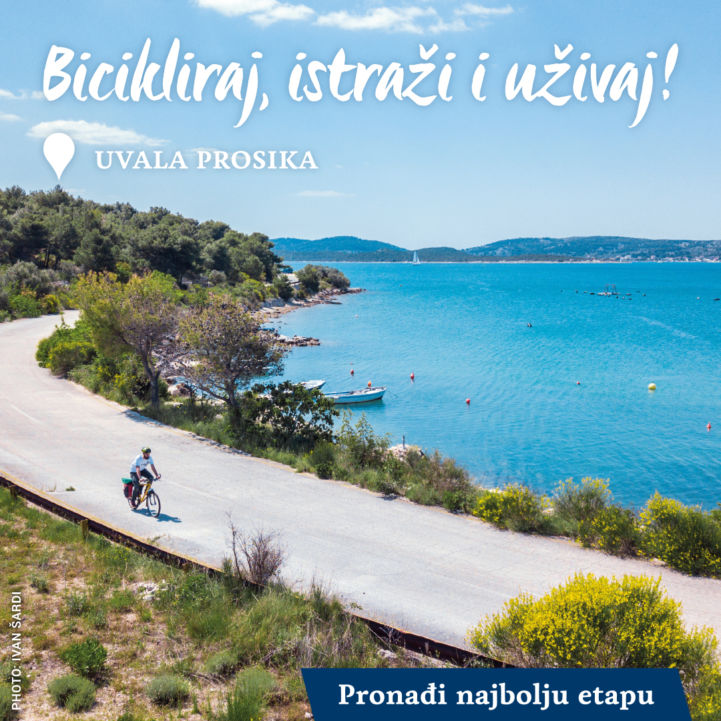
Advocacy successes
There has also been success in strengthening the recognition of EuroVelo in national plans, policies and programmes.
This year Spain adopted its first ever National Cycling Strategy, where cycling tourism is one of ten thematic areas list. One of the goals listed is for Spain to develop a cycle route network that will connect touristic destinations on a local, regional and international level (i.e. EuroVelo Routes). The development of EuroVelo routes that cross the country is also a key aspect highlighted in the Strategy which recommends to improve these connections to exploit the potential of cycling tourism in Spain.
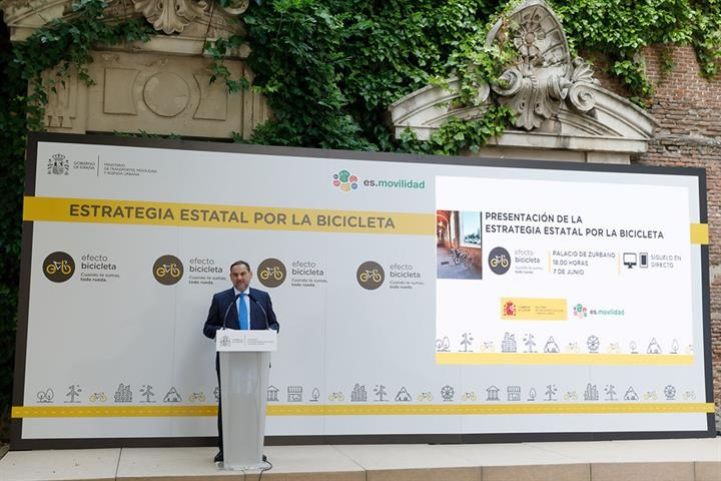
There was also good news from Germany, where the Federal Minister of Transport and Digital Infrastructure announced in the spring a new programme for the expansion of the national long-distance cycle routes, including those that make up the EuroVelo network there. A budget of over €40 million has been allocated to closing gaps, widening cycle paths, better surfaces, modern rest stops etc..
NECC/Cs, as well as ECF members, also found success in calling for greater recognition and more funding for cycling and cycling tourism in their National Recovery and Resilience Plans. It is worth highlighting Romania in particular where the plans should lead to the establishment of a NECC.
Too much to cover
There was lots more that we could have included here but hopefully it provides an overview of the work that is being done on the EuroVelo network across Europe. We are already looking forward to what 2022 will bring !